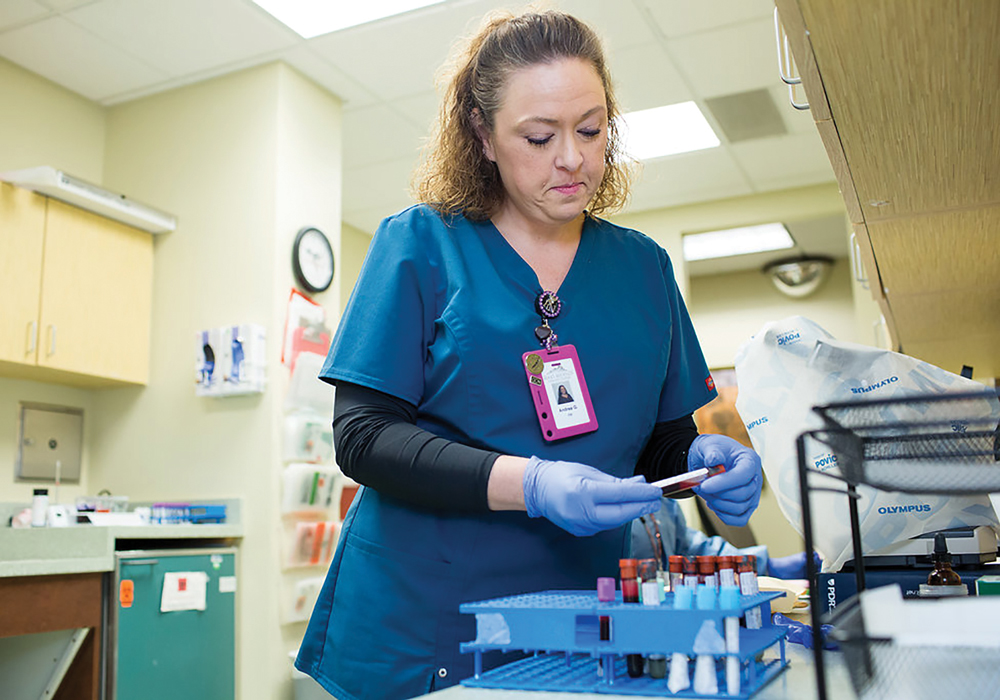By Missy Grier, MSN, APRN, ACNS-BC
Chimeric antigen receptor (CAR) T-cell therapy for relapsed or chemotherapy-resistant acute lymphoblastic leukemia (ALL), chronic lymphocytic leukemia, and B-cell lymphomas is becoming more common. The benefit to patients is significant: durable remission and increased comfort are two major advantages. However, severe toxicities are associated with CAR T-cell therapy that must be considered. As with any treatment modality, the best approach to management for an advanced practice oncology nurse is to fully understand those toxicities and be prepared to provide intensive supportive care.
Cytokine Release Syndrome
The most common toxicity associated with CAR T-cell treatment is cytokine release syndrome (CRS), a systemic inflammatory response that can lead to reversible organ dysfunction and neurologic toxicity. When CAR T-cells are infused, myeloid and various lymphoid cell populations are activated, which leads to the massive release of cytokines responsible for CRS.
Signs and Symptoms of CRS
Cardiovascular, pulmonary, renal, hepatic, gastrointestinal, hematologic, musculoskeletal, neurologic and immune systems may all potentially be affected by CAR T cell-associated CRS. The signs and symptoms associated with damage to each of these organ systems are used to grade the level of toxicity and help determine management. The most widely used is a modified version of the Common Terminology Criteria for Adverse Events. Symptoms are assigned grades 1–4 depending on oxygen requirement, level of organ toxicity, and support necessary for management of hypotension.
Fever: Constitutional symptoms such as fever, rigors, arthralgia, myalgia, headache, and abdominal or back pain are the initial presenting symptoms of CRS. Fever is often the first sign; occurrence is variable and may happen within hours of the infusion or up to a week after. Febrile episodes should be managed with acetaminophen and cooling blankets. Corticosteroids should be avoided because they may inhibit the action of CAR T-cells. Also avoid NSAIDs because they may contribute to renal insufficiency, hemorrhage, and gastritis.
Hypotension: Immediately following infusion, observe hemodynamic status closely. Assess vital signs at least every four hours, more frequently in the presence of fever and tachycardia. Hypotension should be managed initially with fluid resuscitation, with consideration given to a patient’s risk for pulmonary edema and vascular leakage. Hypotension that is not responsive to fluids should be managed with vasopressors. Because cardiac arrhythmias and decreased ejection fraction may occur asymptomatically, initiate continuous cardiac monitoring and obtain an echocardiogram in the presence of other CRS symptoms.
Monitoring for CRS
Laboratory indicators of CRS include hypokalemia, increased urea, decreased glomerular filtration rate, increased C-reactive protein or procalcitonin, and altered blood counts or coagulation tests. Monitor labs daily, or draw more frequently if indicated. Because the presenting symptoms of CRS closely resemble those of sepsis, blood cultures should be drawn to differentiate, especially in the presence of neutropenia. Broad-spectrum antibiotics should be initiated until sepsis is ruled out.
CRS Treatments
Pharmacologic treatments are being investigated in clinical trials. Tocilizumab, an IL-6 receptor antagonist used to treat rheumatologic disorders, has been effective in treating CRS toxicities. Guidelines published by Lee et al. recommended treatment using tocilizumab for grade 3 or higher CRS or grade 2 CRS with other comorbidities. Some are concerned that tocilizumab may negatively impact the effectiveness of CAR T-cell therapy, but patients with ALL have achieved and maintained complete remission after receiving the drug for treatment of CRS. The recommended dosage varies, but it can be given at either 4 mg/kg or 8 mg/kg over one hour, with a maximum dosage of 800 mg. If CRS persists following treatment with tocilizumab, treatment with another immunosuppressive agent or corticosteroids should be considered.






